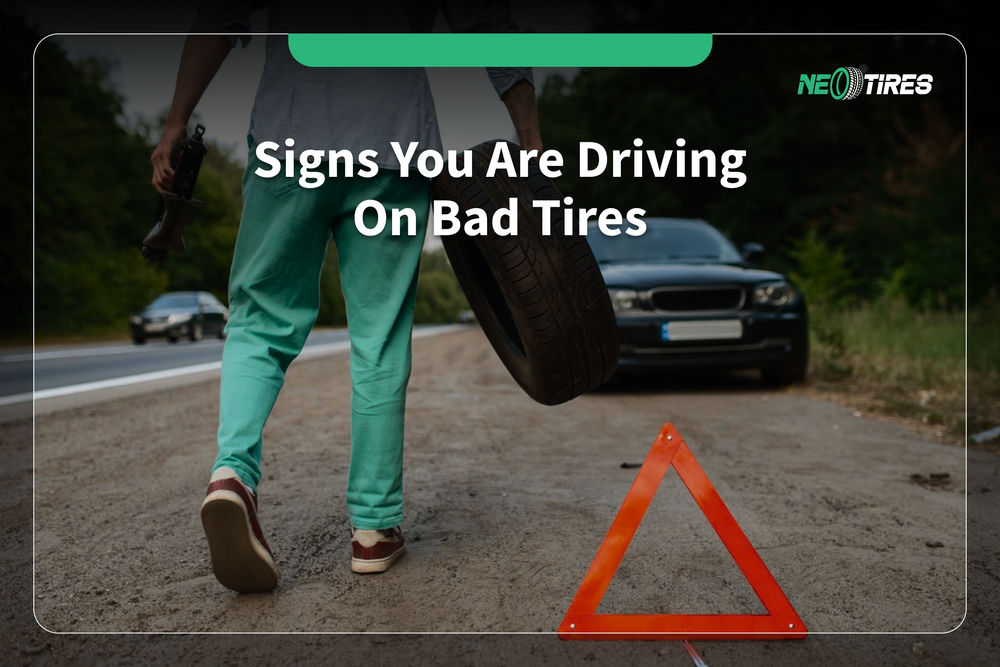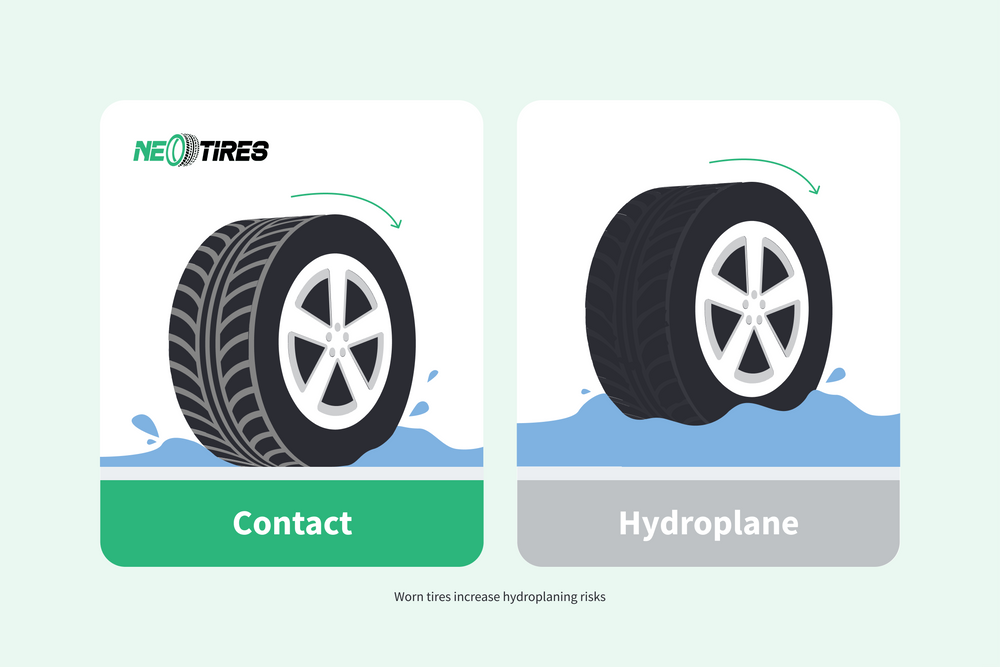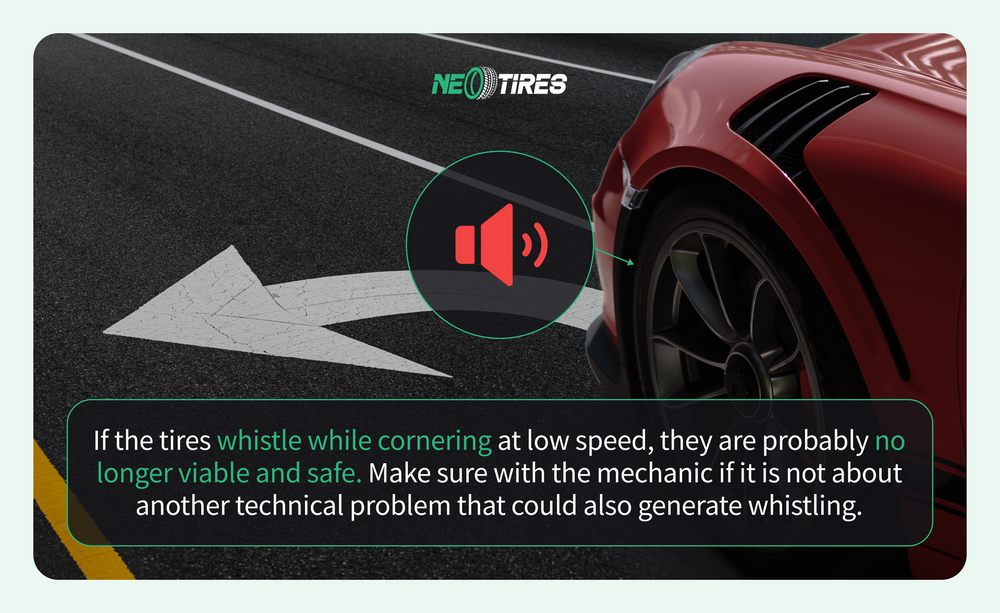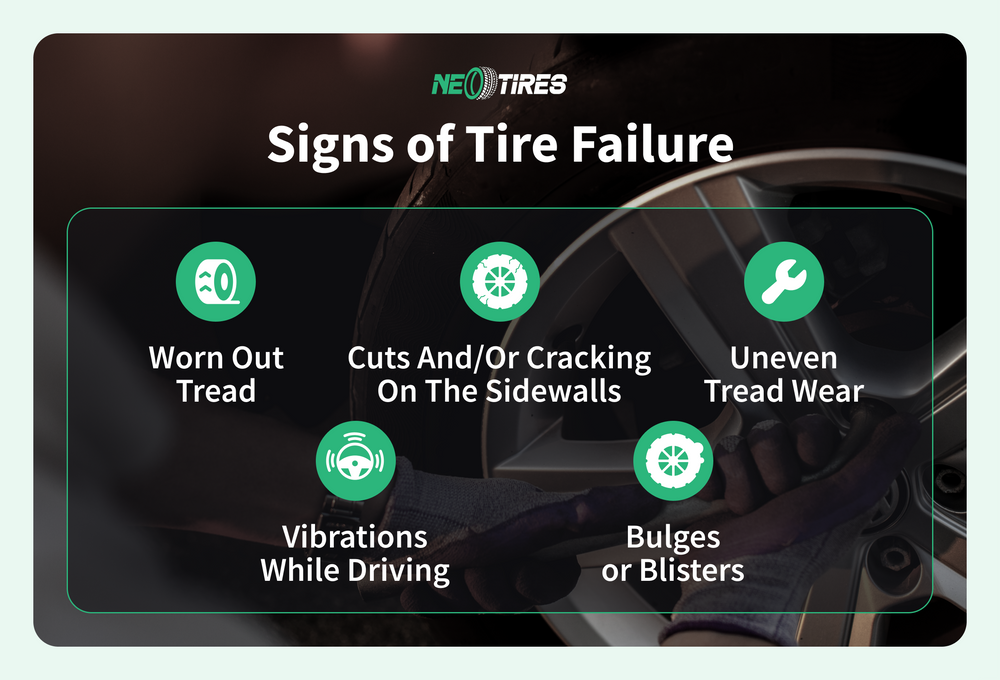Tires play a crucial role in safe driving. With constant stress on diverse terrains and weather conditions, tires lose traction, grip, and performance over time. This article describes the most common signs of a tire no longer providing enough performance and how to spot them to replace them on time.
The NeoTires specialists consulted with experts in the field and studied the consumer report standpoint in this regard. Below, you will find all the necessary information to consider when questioning the integrity of your tires.
Signs You Drive on Bad Tires
The signs you drive on bad tires include hydroplaning, whistling during cornering, and skidding more than usual. Hydroplaning becomes a problem when occurring at low speeds (below +/- 45-50 mph). Whistling during smooth turns at low speeds (up to 30-35 mph) indicates a possible tire bad condition (uneven wear; improper pressure). Skidding or drifting, especially with non-UHP tires, suggests worn tread that might need tire replacement.
Hydroplaning
Hydroplaning is the phenomenon in which tires lose their grip on wet roads being unable to evacuate water from their tread efficiently. Tire treads and special grooves are specifically designed to channel the water away to minimize hydroplaning risk. Moderate speed can help combat hydroplaning. If hydroplaning occurs even at low speed, the tire's tread is too worn to evacuate water away.
New tires typically hydroplane at an average speed of 50 mph in heavy rain conditions. Hydroplaning is expected at an average speed of 40- 45 mph with 1-3 years tires.
When Is Hydroplaning A Problem?
Hydroplaning becomes a problem when it occurs at a low speed of up to 40 mph. Everything below this threshold indicates a worn tire tread that is no longer able to evacuate water efficiently.
Hydroplaning with worn tires feels the steering wheel twitching from side to side when hitting a puddle with both wheels simultaneously. This means that the tires lose their grip. If this effect occurs at 25-35 mph, we recommend you consider new tires.
Whistling When Cornering
Sounds and noises in the vehicle AND tires indicate damaged or loose belts, brake issues, worn engine bearings, low oil levels, damaged tires, or worn tire treads. Tire whistling during turning leads to loss of traction.
When Does Whistling Become a Problem?
Tire whistling is a problem when it occurs during smooth turns and at a relatively low speed of about 30-35 mph. Changing tires is recommended at this stage unless the mechanic does not detect other technical issues that could also produce similar noises.
Skidding/Drifting
The tire skidding/drifting is an indicator of poor tire tread condition. If the braking on a straight section is accompanied by skidding AND the tread depth is less than 2/32'', the set of tires must be replaced urgently. Check on How to Measure Your Tread Depth easily to make sure there is still enough tread left in your tires.
Tire Failure: FAQs
What Can You Do To Minimize The Risk Of Tire Failure?
To minimize the risk of tire failure, consider regular tire inspection to spot tire cracks, uneven tread, and worn tread; regular tire pressure adjustment, timely rotation, balance, and alignment; and adopt judicious driving habits.
What Are The Signs Of Tire Failure?
Signs of tire failure include worn-out tread, sidewall cuts, and cracking, uneven tread wear, vibrations and noise while driving, and bulges or blisters. Learn more about Tire Bulges | Why They Appear And What To Do
Why Trust Us?
NeoTires cares about the safety of our customers and all drivers. We strive to provide truthful and validated information by experts in the field and major tire manufacturers. Tires have become an object of study for us because they define the vehicle's performance in various road and weather conditions. We do everything possible for drivers to choose the right products to help them make it in any condition without risking their safety.
You can count on us whenever you need tire-related assistance. Our trained assistants and qualified mechanics can guide you in any tire-related matter, prioritizing your driving safety and comfort. We cannot change your road conditions. But, at least, let us help you drive as confidently and efficiently as possible with our products. Drive safe and choose your tires wisely!









